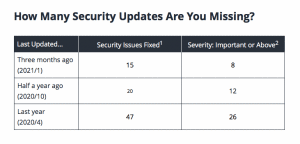After an incredibly long hiatus, we’re back with this week’s Storage Short Take. In today’s issue, the really big news is the release of the NVMe 2.0 Family of specifications. This will take a lot of explanation, so it deserves its own blog post (though NVM Express has written a very good one), but I’ll cover it here.
As always, if you have information that you wish to share (news, updates), please feel free to let me know in the comments below.
- Storage Media and Technology
- Storage Companies in the News
- Industry Associations and Standards
- Webinars and Conferences
- Synology Security News
- Bonus Round
Storage Media and Technology
One of the interesting things to come out of storage technology lately is two major developments. First, a joint research project between universities in the UK and the EU have demonstrated that new graphene-based HDDs can achieve 10x the capacity than what’s currently available. This raises some very interesting operational questions, though, which deserve additional attention (beyond the scope of these short takes). (Blocks & Files has a pretty good breakdown, though, if you’re in a hurry.)
The second has to do with dual-actuator HDDs. Seagate recently announced that they’ve developed the “World’s Fastest HDD,” This is a technology that I’ve known about for years, but have never really been able to get behind. I still ask the basic question: is the $/workload ratio worth it?
For all the conversations about BitCoin and Blockchain, it may seem like Chia came out of the blue. (Apparently all it takes is one Elon Musk tweet and the world can change – too bad he hasn’t retweeted any of my Short Takes. ;). Storage Unpacked does a really good podcast about what Chia is and how it’s different with guest Robert Novak.
Storage Companies in the News
Over a year ago, I wrote about NetApp’s pivot into cloud-based “as a Service.” They acquired Talon Storage with the intention of doing “software-defined storage services” for the Enterprise, and re-zoned its attention on the Keystone program. Now it appears that this focus on Hybrid Cloud is beginning to become clearer.
Well, this is awkward. ExaGrid, a storage provider that proports to “thwart” (I love that word) ransomware attacks, paid their own ransomware demand. Not to make light of this, of course, because ransomware attacks are more common and hitting more and more businesses and individuals.
Industry Associations and Standards
As I mentioned, NVM Express has released the new 2.0 family of standards, completely refactored. “Refactored,” in this sense, means that the specifications have been taken apart and put back together in a much more intuitive fashion. (Nick Adams, David Woolf, and myself did a SDC presentation on what this looks like and what it means to developers).
NVMe has released an infographic about the technology’s development and a high-level overview of what the refactored specifications look like
NVM Express has also published a Press Release
There is a blog on “everything you need to know” about the NVMe 2.0 family of specifications.
Billy Tallis from AnandTech has a really nice writeup that’s worth reading
StorageNewsletter also has a writeup. It’s not quite as good, but it is informative.
Webinars and Conferences
SNIA’s Storage Developer Conference for EMEA is currently underway.
You can/should also register for the SNIA SDC virtual conference in September. The prices are still incredibly low for this conference, especially for the quality of content that you get.
Synology Security News
Please see earlier Storage Short Takes for additional Synology advisories. Some of those vulnerabilities are still active. It’s a good idea to check your devices to see if they need updating. Chances are, they probably do.

Synology table from May 13, 2021.
Synology has changed the way that it reports vulnerabilities. In short, they don’t. Instead, they only announce security vulnerabilities once fixes are publicly available. I’m of two minds about this, because on the one hand I can understand that publishing lists of vulnerabilities that don’t have fixes can lure evil doers to hammer on them before they can be solved. On the other hand, it risks having users continue to use vulnerable programs and services.
Nevertheless, it’s wise to periodically check their website for new risks (which are listed, whether they are resolved or not – kind of why I’m not sure about their policy about only letting users know after the fact) and take appropriate action that you see fit.
<rant>For their part, Synology spends a great deal of time trying to get people to use their backup solution. The only problem is – it sucks. Moreover, the documentation for their Hyperbackup suite of products either is absolutely useless/horrible, or it doesn’t exist at all. Troubleshooting tools are non-existent, and restoration of data takes considerable amounts of time and effort. It is, by far, Synology’s weakest element. </rant>
Bonus Round

Since that time, I’ve become an affiliate for Flackbox, so I thought it would be a good idea to include that as part of that news. 🙂


